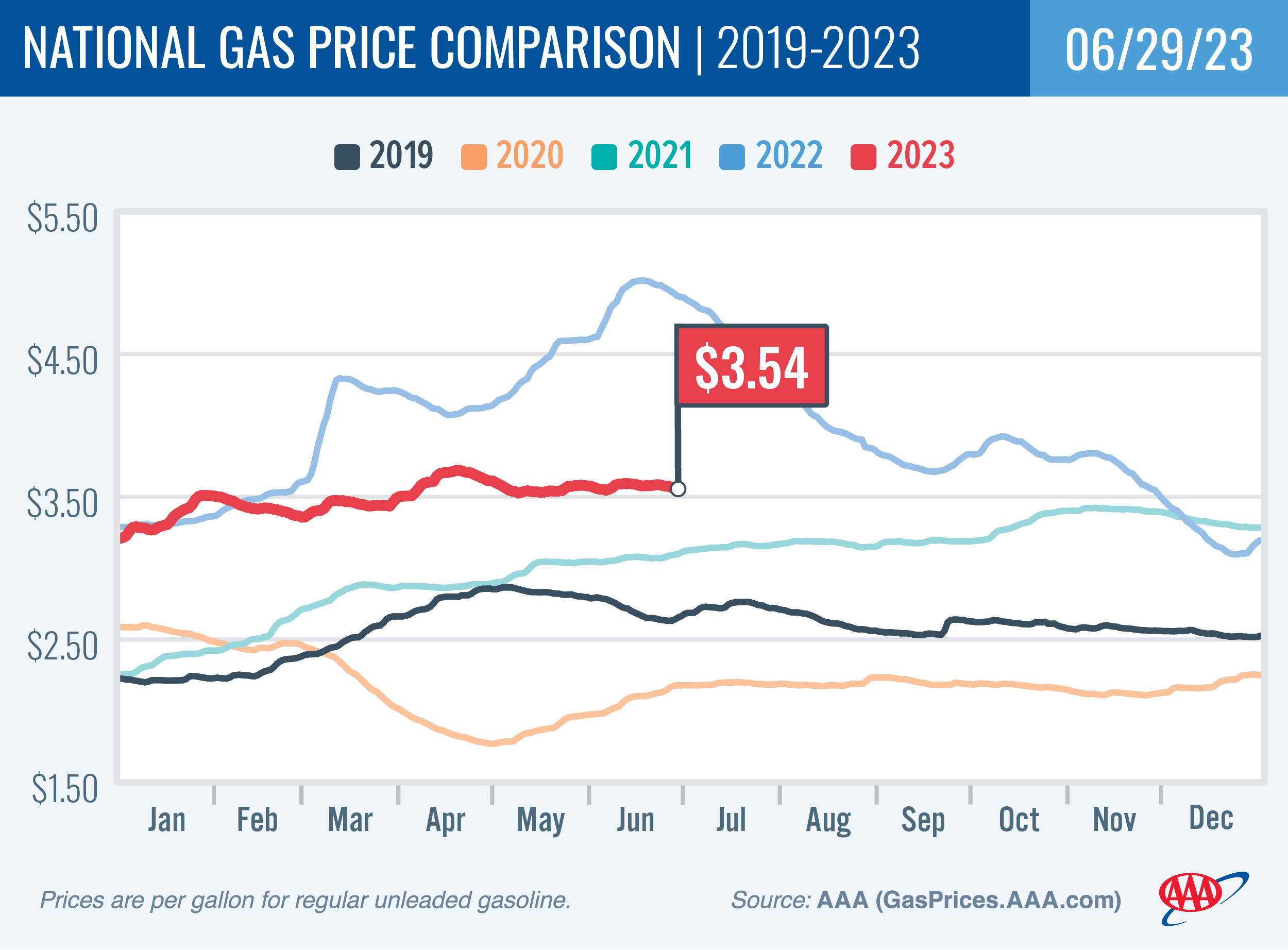Gas Prices Drift Lower as Drivers Prepare for July 4th Travel
Gas Prices Drift Lower as Drivers Prepare for July 4th Travel

Drivers hitting the road for the Fourth of July holiday will find the gift of lower gas prices across most of the country. AAA forecasts that more than 50 million people will celebrate the nation’s birthday by traveling, with a record 43.2 million going by car. The national average for a gallon of gas fell four cents since last week to $3.54.
"Gas prices are $1.30 per gallon less this year than last, but they are still high compared to historical averages,” said Andrew Gross, AAA spokesperson. “The previous record average high price for gas on July Fourth was $4.10 in 2008, while the low was $1.39 in 2001. Yet despite currently elevated prices, drivers are not cutting back on travel this summer.”
According to new data from the Energy Information Administration (EIA), gas demand decreased slightly from 9.38 to 9.31 million b/d last week. Meanwhile, total domestic gasoline stocks increased by 600,000 bbl to 220 million bbl. Lower gas demand amid increasing supply has helped to limit pump price increases. If demand remains low, pump prices will likely continue to decline through next week.
Today's national average of $3.54 is four cents less than a month ago but $1.32 less than a year ago.
Quick Stats
Since last Thursday, these 10 states have seen the largest decreases in their averages: in their averages: Arizona (−16 cents), Ohio (−11 cents), Indiana (−11 cents), Wisconsin (−11 cents), Illinois (−9 cents), Kentucky (−6 cents), Nevada (−6 cents), Georgia (−6 cents), Utah (−6 cents) and Florida (−5 cents).
The nation's top 10 least expensive markets: Mississippi ($2.97), Louisiana ($3.08), Alabama ($3.10), Tennessee ($3.10), Arkansas ($3.11), South Carolina ($3.17), Texas ($3.18), Oklahoma ($3.22), Georgia ($3.23) and North Carolina ($3.25).
Oil Market Dynamics
At the close of Wednesday’s formal trading session, WTI increased by $1.86 to settle at $69.56. Oil prices increased yesterday due to market concerns after the EIA reported that total domestic commercial crude inventories decreased significantly by 9.6 million bbl to 453.7 million bbl last week, signaling that demand may be more robust than anticipated this summer. However, price increases have been capped since the market continues to worry that a recession could occur this year due to rising interest rates. If a recession occurs, oil demand and prices will likely decline.
Drivers can find current gas prices along their route using the AAA TripTik Travel planner.



